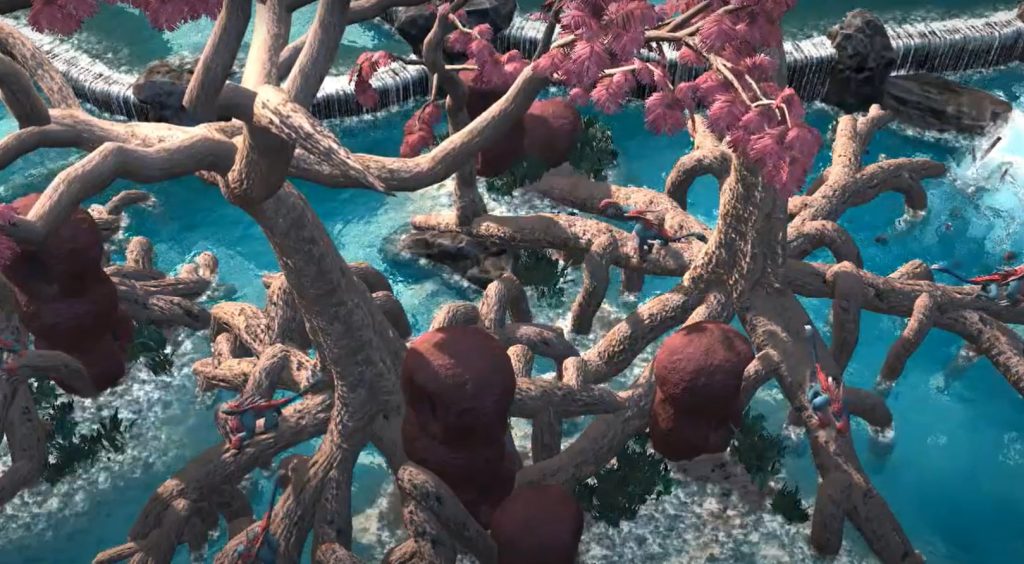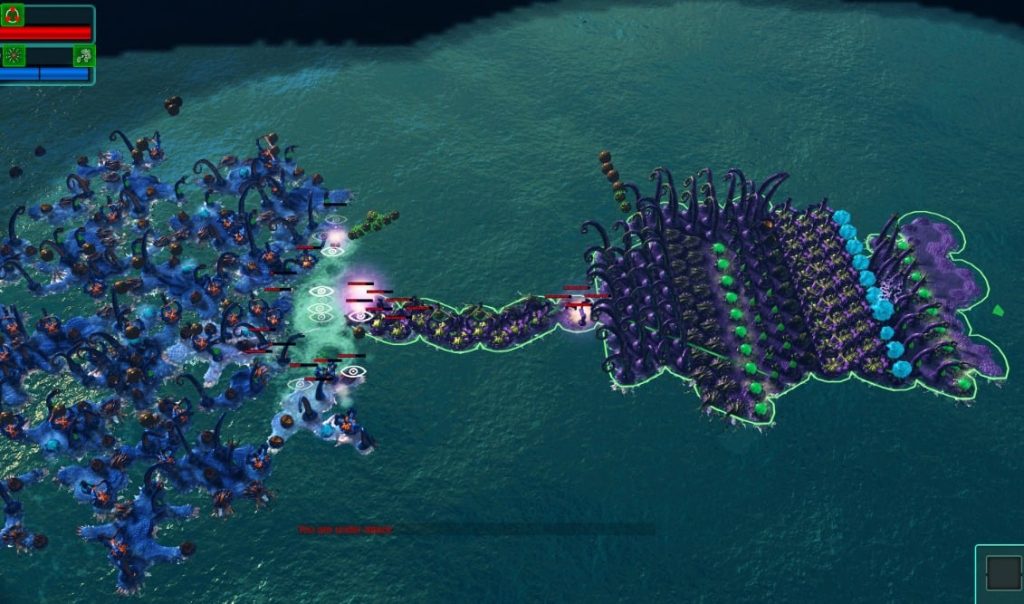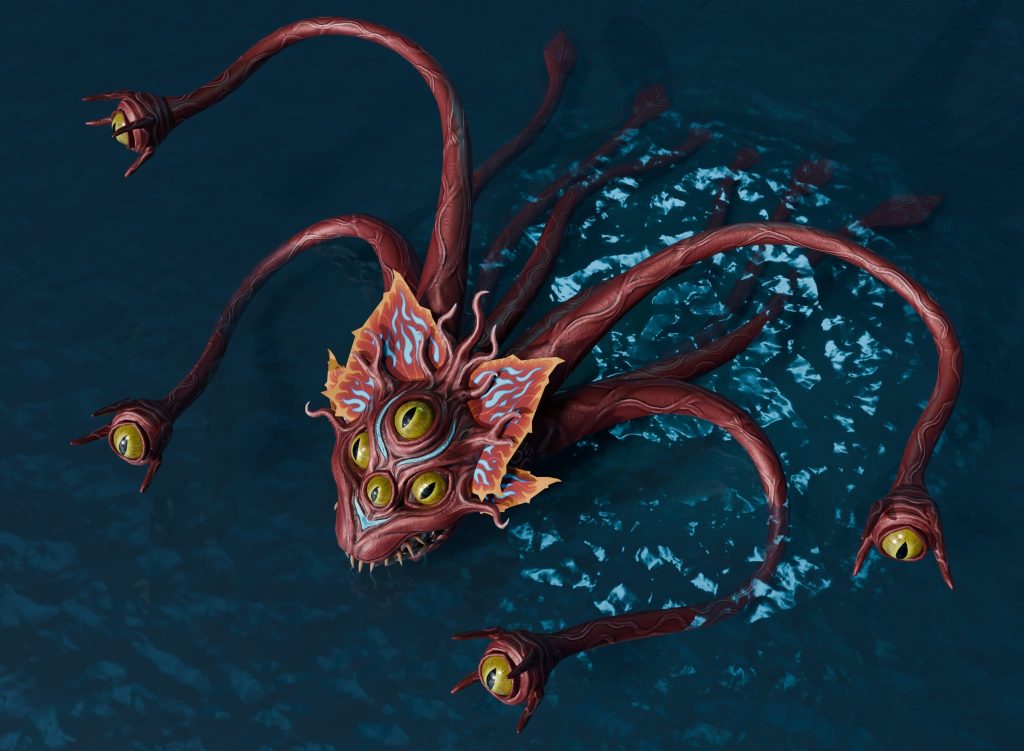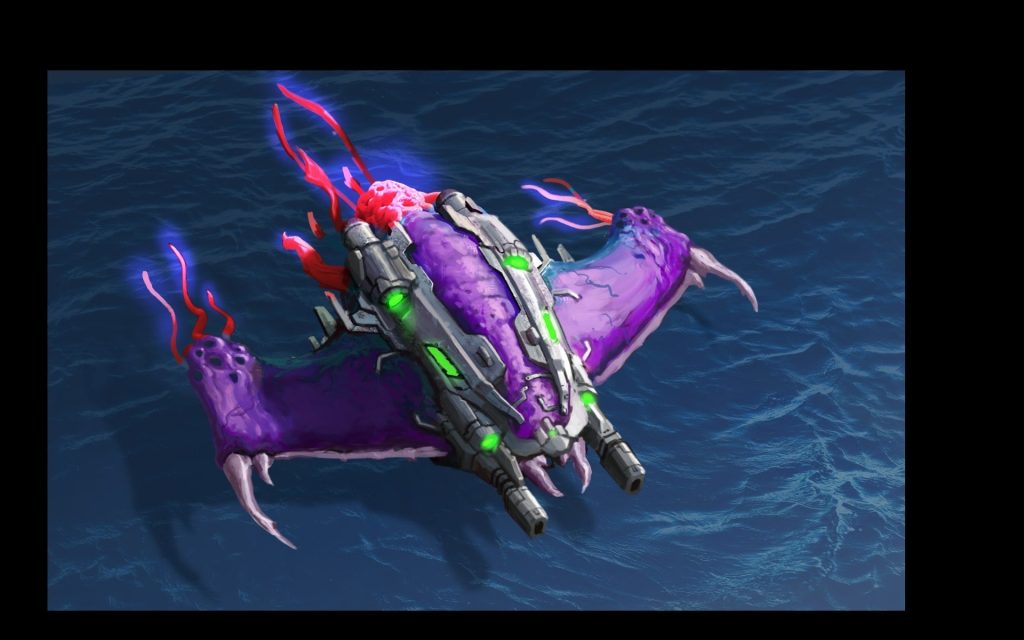The Genesis of Moduwar
Sitting down with Alon Kaplan, CEO, Team lead, and composer at Biohex Studios, at the Olamot convention, I was eager to uncover the story behind Moduwar-an RTS unlike any other. Alon recounted how the journey began nearly a decade ago, when he and co-creator Alon Tzarafi (CTO & Lead Game Designer), both passionate about real-time strategy games, gathered friends to brainstorm a new concept. Inspired by the cult classic NetStorm, they envisioned a game where players connect floating islands and build modular weapons. The twist? In Moduwar, these islands would be living creatures, not static landmasses.
After a pivotal phone call, the core mechanic of splitting and merging living entities was born. The team quickly built a tiny prototype, but the road ahead was anything but straightforward. Showcasing early builds at conventions, they received positive feedback but struggled to find a publisher willing to take a risk on such an unconventional idea. It wasn’t until a chance meeting with Firesquid at Gamescom that things finally clicked, leading to a publishing deal and a renewed sense of purpose to finish the game.

Navigating Development Hurdles
Alon was candid about the challenges faced along the way. One major regret was not formalizing the company and legal agreements earlier, which would have streamlined team dynamics and revenue sharing. Another hurdle was the ambitious scope: instead of focusing solely on a single-player campaign, the team expanded to include four additional modes-Arena, Survival, Skirmish, and Multiplayer.
Multiplayer modes will allow 2-4 players to compete, while additional modes like Skirmish and Monster Arena offer varied gameplay experiences beyond the main campaign
While this added depth, it also increased complexity, as every change had to be tested across all modes, stretching the small indie team’s resources.
Developing an RTS is notoriously difficult, and Moduwar pushed the Unity engine to its limits, leveraging advanced technologies like DOTS (Data-Oriented Technology Stack) and ECS (Entity Component System). The codebase became highly intricate, and the team had to engineer a level editor reminiscent of StarCraft’s, complete with robust trigger systems for diverse and dynamic stage design. The narrative, too, saw multiple iterations and designers before Boris Oliynski (R.I.P) cracked the story that resonated with the whole team.
The World and Story of Arkadia
At its core, Moduwar is set on Arkadia, a lush alien world teeming with biodiversity. The Modu, the planet’s native modular lifeforms, once lived in harmony until two invading factions-technologically advanced Humans and the ruthless Chimera-arrived, enslaving the Modu as living weapons. The game’s campaign puts players in the role of a Modu serving the Earth Repatriation Expedition (ERE), with the freedom to choose their allegiance. This branching narrative lets you decide whether to fight for your captors or break free, shaping the fate of Arkadia and its inhabitants.
The story isn’t just window dressing; it informs gameplay and player agency. Alon emphasized that the campaign will allow players to experience both sides of the conflict, with decisions that impact the unfolding narrative. The Modu themselves are designed to be alien and unique, challenging players to empathize with beings that are distinctly non-human.

Modular Mechanics and Strategic Depth
What truly sets Moduwar apart is its modular gameplay. Instead of traditional units, you control a single Modu organism that can grow, split, and recombine its body parts at will. Each segment can be outfitted with organs-such as mouths for melee attacks, turrets for ranged combat, or brains for buffs-that define its abilities. These organs can be detached and controlled independently, enabling complex tactics like flanking, distraction, or rapid repositioning. The size and shape of your Modu directly influence speed, attack bonuses, and other attributes, encouraging creative experimentation.
Resource management is central: each new body part costs regenerable resources, so players must balance expansion with efficiency. The full game promises an “Organs Tree” with at least 25 organs, split across three factions, each with four unique organs. This system supports a staggering variety of combinations, ensuring that no two playthroughs are alike. Even in the current demo, players can experiment with four organs and face off against a range of enemies, learning to master the game’s unique mechanics.
Level Design and AI Challenges
Designing levels for Moduwar presented unique challenges. The team wanted each campaign stage to encourage use of the game’s core mechanics-splitting, merging, and organ synergy. This led to the creation of diverse NPC monsters and bosses, each requiring different strategies. For example, some enemies dive underwater and attack from below, forcing players to build creatures with eyes for detection. Others move rapidly, demanding that you split your Modu and cover multiple areas simultaneously.
The advanced level editor, inspired by genre classics, allows for intricate trigger systems and dynamic encounters. This not only enhances replayability but also empowers the team to craft memorable, varied challenges that push players to fully explore the game’s strategic possibilities.

Behind the Scenes: Inspirations and Surprises
Alon shared several fascinating behind-the-scenes stories. As a tribute to 90s RTS games like Command & Conquer, the team filmed live-action cutscenes featuring actors interacting with the Modu, shot on the deck of a real spaceship simulator. The overwhelmingly positive response to these sequences inspired the team to expand this aspect for the full release.
Music has been a deeply personal journey for Alon, who, with 12 years of experience composing for games, found Moduwar to be his most challenging project yet. Striving for perfection, he drew inspiration from Frank Klepacki’s iconic Command & Conquer soundtracks, aiming to tell the story of Moduwar through music. Not every experiment worked-a 50-piece orchestral recording for the opening theme was ultimately set aside-but the process reflects the passion and dedication poured into every aspect of the game.
Another highlight was securing the voice talents of Neil Kaplan (no relation), known for roles in StarCraft II, Naruto, and Voltron, who recorded narration for the story trailer as a gesture of support. This collaboration added a layer of professional polish and excitement to the project.

The Road to Release and Community Engagement
After years of iteration and setbacks, the partnership with Firesquid marked a turning point, providing the resources and motivation needed to push Moduwar toward completion. The team has been proactive in engaging with the community, releasing demos, gathering feedback at conventions, and fostering a vibrant Discord server. The upcoming release, slated for Q2 2025, is highly anticipated, with the latest demo showcasing polished visuals, seamless animations, and a user-friendly interface-a testament to the team’s relentless pursuit of quality.
Conclusion
Moduwar stands as a testament to indie innovation and perseverance. Almost a decade in development, it blends classic RTS sensibilities with groundbreaking modular mechanics, offering players unprecedented freedom and strategic depth.
The game’s rich narrative, technical sophistication, and passionate team set it apart in a crowded genre. As Moduwar approaches release, it promises not only to challenge players’ tactical skills but also to immerse them in a living, breathing alien world where every choice-and every mutation-matters. This is one RTS that dares to be different, and the journey to Arkadia is one you won’t want to miss.
You are invited to wishlist the game via the link:
http://store.steampowered.com/app/923100/Moduwar/?utm_source=GamerDeal2025